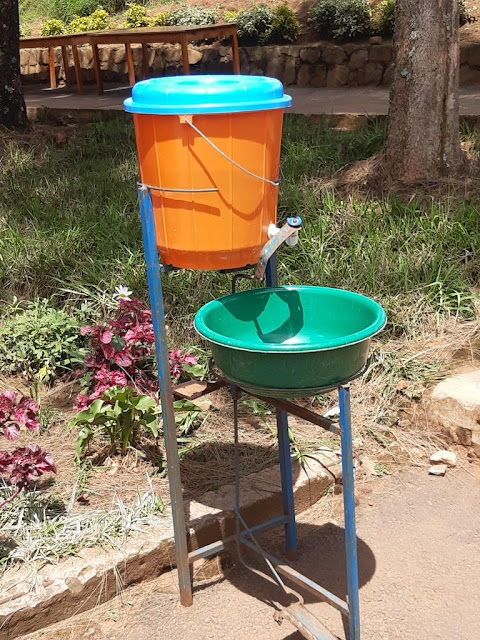Washing hands
 That Boris
Johnson partied while the rest of the population obeyed the coronation measures
is now a fact. But we all also remember a video in which Johnson demonstrated
how to wash your hands properly. While singing a cheerful song, we saw how to
wash your hands.
That Boris
Johnson partied while the rest of the population obeyed the coronation measures
is now a fact. But we all also remember a video in which Johnson demonstrated
how to wash your hands properly. While singing a cheerful song, we saw how to
wash your hands.It is, of
course, nice when there is running water. But what do you do when there are no
or hardly any sanitary facilities? In Africa, they know what to do. Every
problem gets a local solution here. Like a portable hand-washer.
You see
them in various designs. Some are more advanced than others. But roughly
speaking, they all have at least a water tank, a catch basin or rinsing basin
and some sort of metal structure on which the first two rest. The water tank
can be a bucket or a plastic jerrycan. A tap is fitted to the the bottom of the
tank. The metal structure has a holder, placed somewhat lower, in which a basin
fits. On the side there is also a holder for a bottle of soap. This can be a
bottle with a pump, the type you can buy in the supermarket. Or, just a water
bottle with liquid soap. The cap has a hole in it to make it easier to dose the
flow of the soap. In the basic version of this hand wash basin, you open the
tap, you wash your hands. That's it. Occasionally, someone empties the sink and
refills the tank. Handy and easy. In the more luxurious version, the tap is
connected to a pedal via a lever. So, you can open the tap with your foot. And
sometimes the rinsing basin also has some sort of drain. The waste water then
goes into another tub.
You see
these handwashers everywhere in the streets of Rwanda. Handy, but here is a
golden tip: always check that there is still water in the water tank before
spraying soap on your hands....



Comments
Post a Comment